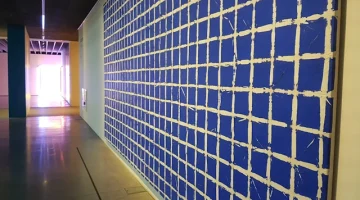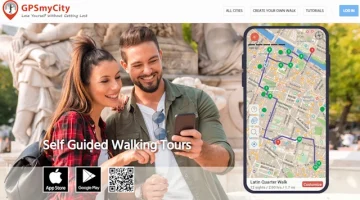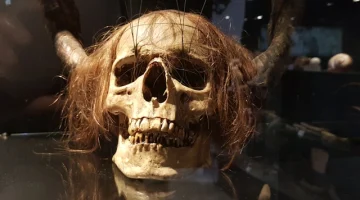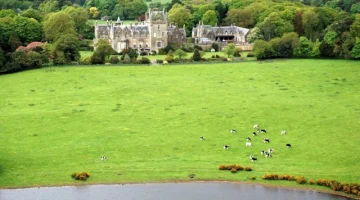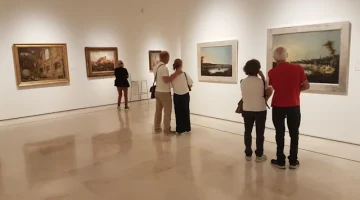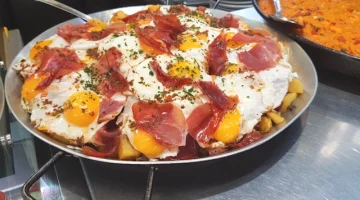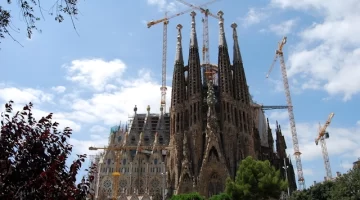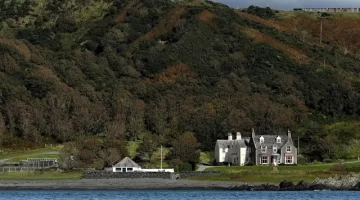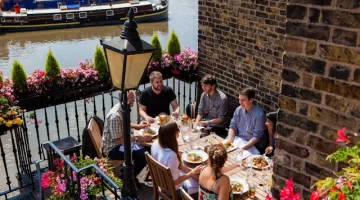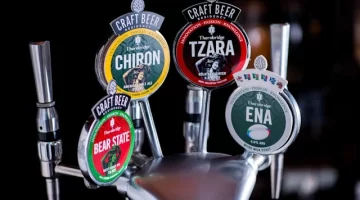Newcastle City Tour
Mike Gerrard takes a Newcastle city tour with a Blue Badge Guide and learns more about the city’s history than any guidebook can teach you.
While we were staying at Jesmond Dene House in Newcastle, we arranged a city tour with a Blue Badge Guide. While some people don’t like organised tours, we find that a tour with a good, knowledgeable Blue Badge Guide will teach you more about the history of a place in a few hours than you can get from any guidebook.

If you book a personal tour, you can also have a say in where you go, you can linger at the things that interest you and skip those that don’t. At one point in our tour when we asked about historic pubs, we took a quick diversion while our guide showed us a few places that weren’t on the itinerary.
We began our tour with our guide, Gwen Keating, on a beautiful sunny day near the War Memorial. Before talking about the Memorial, Gwen pointed out the university buildings all around us.

‘We have two universities,’ she explained, ‘and 50,000 students. The population is about 278,000 plus the 50,000 students, and 1/3 of the population is under the age of thirty. The units are well-known for law, medicine, dentistry and marine engineering, amongst other subjects. In fact they announced only yesterday that they had discovered a cure for recurring childhood leukemia.
‘There’s a good metro here, too, and good public transport generally. Cycling is important for the students. You can rent a bike for the day, that’s a good way to get around the city cheaply.’
The War Memorial
We’re doing it on foot, though, and Gwen walks us over to the impressive War Memorial, called The Response, a tribute to the Northumberland Fusiliers. ‘It was put up by a local family, the Renwicks, whose four sons all went off to the First World War and they all came back safe, so they put this memorial up in gratitude.’

Historic Shops
Gwen then leads us through the city streets, scattering facts and anecdotes all around. We learn that the Marks and Spencer’s store in Newcastle is the second-largest in the country, after the one on Oxford Street in London. She later tells us we’ll be seeing the smallest Marks and Spencer’s in the world. We stop at the site of the first Boot’s chemist store in the country, next to which is Fenwick’s, the first department store to open in Newcastle. Fenwick’s is a Newcastle family.
Tea and Football
We then walk to the top of Grey Street, named after Earl Grey of tea fame, and from there we can see the football stadium. ‘St James’s Park holds 53,000 people,’ Gwen tells us, ‘and is the only major stadium that is right in a city centre. In Newcastle we have three cathedrals: the Anglican, the Catholic and St James’s Park.’
If you’re a football fan you can do a tour of St James’s Park:
www.nufc.co.uk/page/Club/StJamesPark/StadiumTours
One of the most interesting things we see is in the Grainger Market, which was built in 1837 when it was the biggest in Europe, covering two acres and with 14 different entrances. Inside it we see what is indeed the smallest Marks and Spencer’s in the world, the same market stall that opened in 1905 as the Penny Bazaar and now selling mostly slightly damaged clothing.
Gwen leads us through the shopping crowds to The Weigh House. ‘The Weigh House,’ she says, ‘has a wide door so that butchers could walk through it while carrying a carcass and not have to put it down. People would also come in here to get weighed. In earlier times no-one had a set of scales at home so if they needed to put their weight on any official forms they came in here. They are the most accurate scales in the country. By Saturday lunchtime when I was showing a group round here they’d had 330 people in, paying 30p a time to get weighed.’
It was still bustling on a weekday morning, and it was a fascinating little historic glimpse that we’d probably have missed, without a guide like Gwen.
Historic Firsts
And on we go, to see the first street in the world to be lit by electric light. The light bulb was invented in Newcastle, as was the miner’s safety lamp. We visit some historic pubs and then stroll down to the river to look at the bridges. Robert Stephenson’s High Level Bridge was the first double-decker bridge in the world when it was opened in 1849, carrying trains on top and traffic underneath.

‘It was opened by Queen Victoria,’ Gwen tells us, ‘and she was in such a hurry going up to Scotland that she simply stopped her train in the middle of the bridge, declared it open and then went on her way. A luncheon had been planned so they went ahead and had it anyway and sent the bill to Buckingham Palace. Her Majesty was not amused and every time after that, when she came through Newcastle, she had the curtains on the train pulled down so she didn’t have to look at the place.’
Our tour with Gwen was filled with stories like that, with historically fascinating gems, engineering firsts, new attractions and old institutions. We pop into the Literary and Philosophical Society, which we would never have done on our own as it looks like a private club. Inside was a fascinating old library, with books going back to the 1500s. The Society’s President is the comedian, Alexander Armstrong, who was born in Northumberland.

We visit cathedrals, railway stations and monasteries. We hear about everything from Cardinal Basil Hume (a Newcastle man) to Match of the Day, salmon fishing, Roman forts, witchcraft trials and public executions. It’s a fascinating few hours, and whether you’re visiting Newcastle for the first time or, like us, revisiting after a gap, we highly recommend a Newcastle city tour.
Newcastle City Tours
In the Central Arcade is the Newcastle Tourist Information Centre. From April-October there are guided city walks at 10.30 every morning for a small charge.
For a personal tour, contact Gwen Keating: Tom_gwen_keating@hotmail.com
You can also search the North East region on the Blue Badge Guides website.



